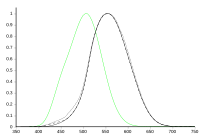Luminosity function

Hey little one! Have you ever looked up at the night sky and seen all the stars glimmering above you? Well, there are billions and billions of stars out there, all shining at different brightness levels. The luminosity function is a way to understand how bright these stars are and how many of them we can see.
It's like putting all the stars in a jar and counting how many bright ones there are and how many dim ones there are. Scientists use something called a histogram to make a chart that shows how many stars there are at each brightness level.
The luminosity function helps us understand how stars are made and how they evolve over time. It tells us that most stars are not that bright, but there are a few that are really, really bright. We can use this information to learn more about how stars form, how they change as they age, and even how galaxies are formed.
So, next time you look up at the stars, remember that there are so many of them and scientists are working hard to understand them better with the help of the luminosity function.
It's like putting all the stars in a jar and counting how many bright ones there are and how many dim ones there are. Scientists use something called a histogram to make a chart that shows how many stars there are at each brightness level.
The luminosity function helps us understand how stars are made and how they evolve over time. It tells us that most stars are not that bright, but there are a few that are really, really bright. We can use this information to learn more about how stars form, how they change as they age, and even how galaxies are formed.
So, next time you look up at the stars, remember that there are so many of them and scientists are working hard to understand them better with the help of the luminosity function.
Related topics others have asked about:
